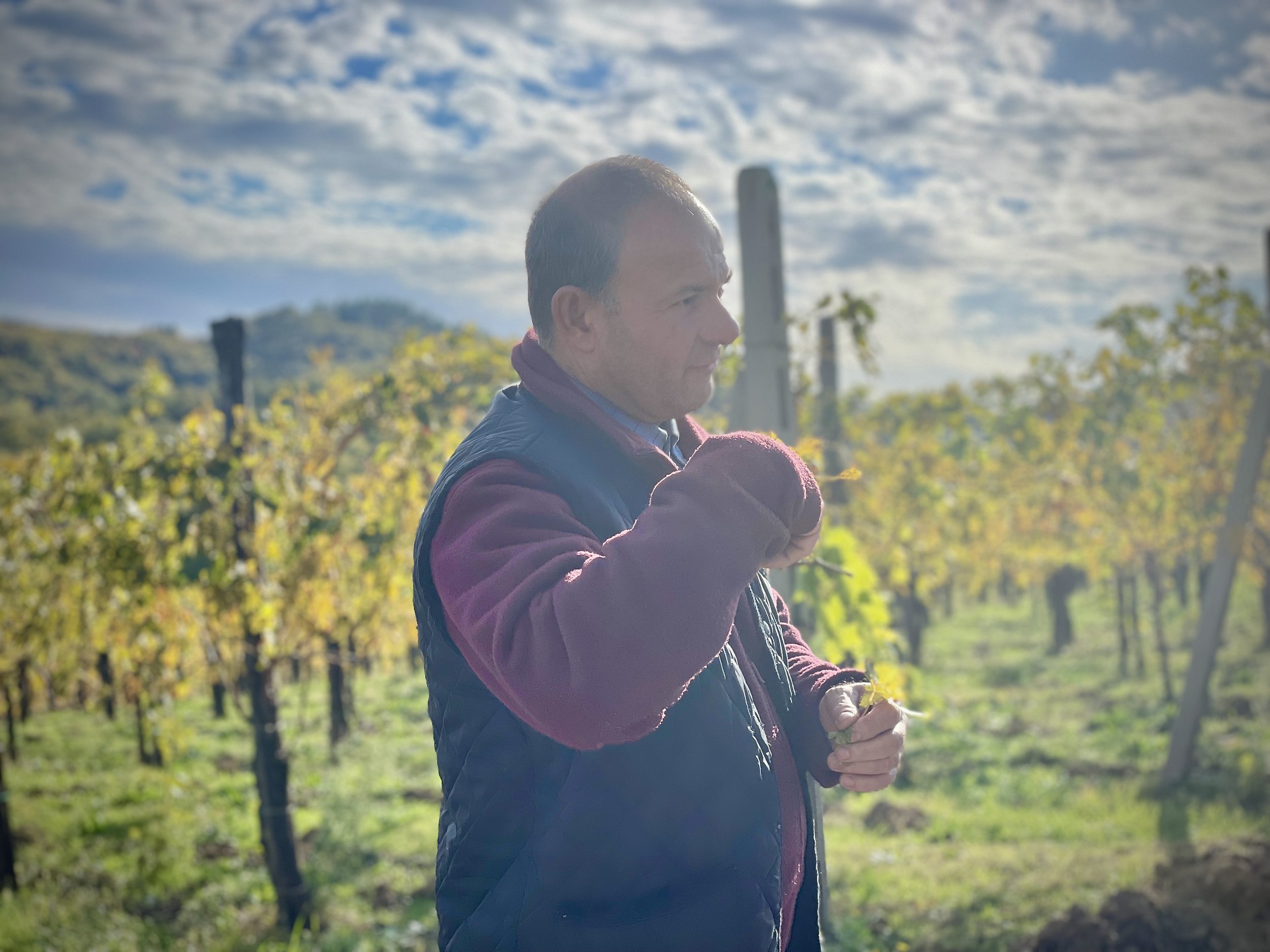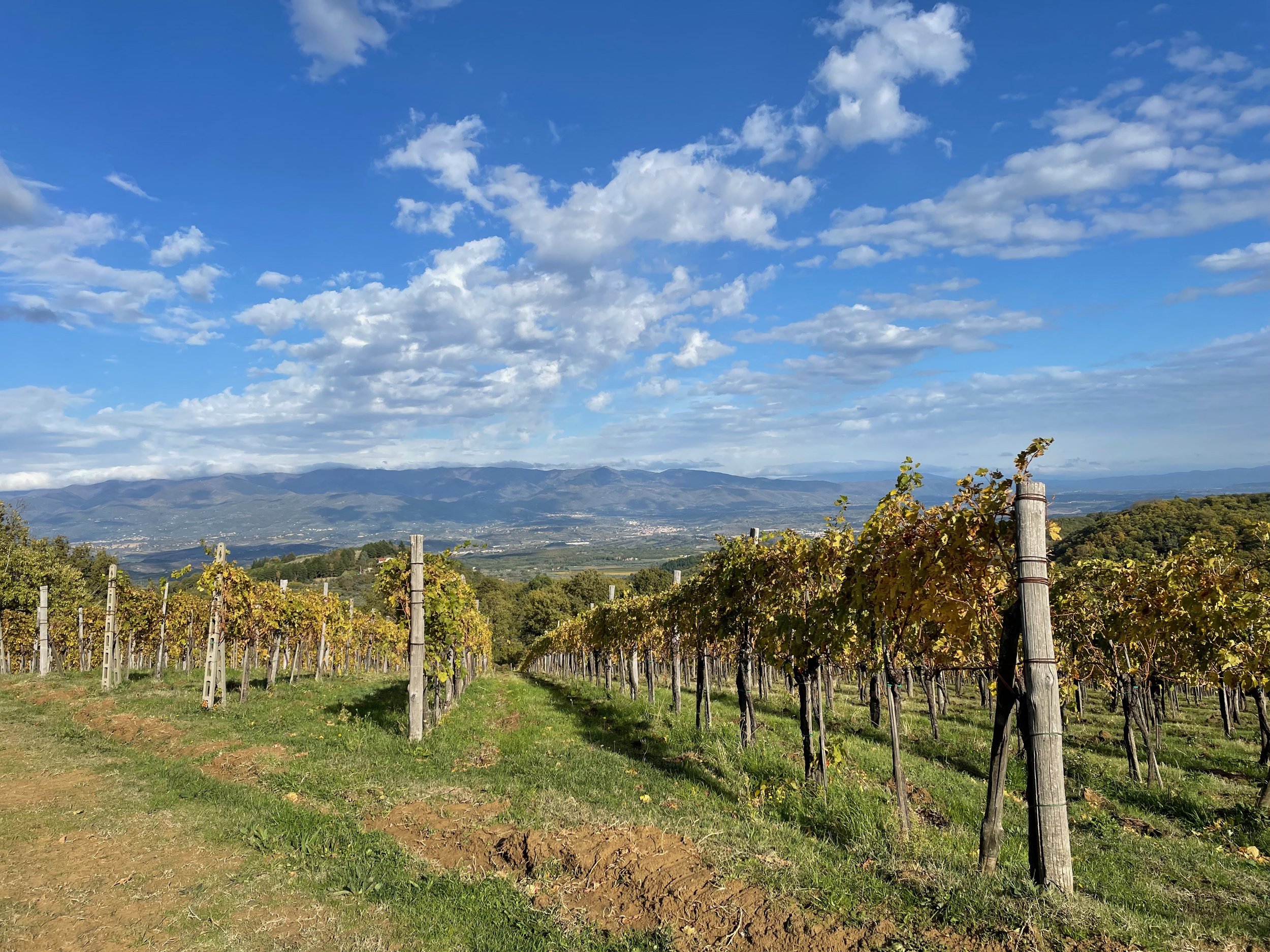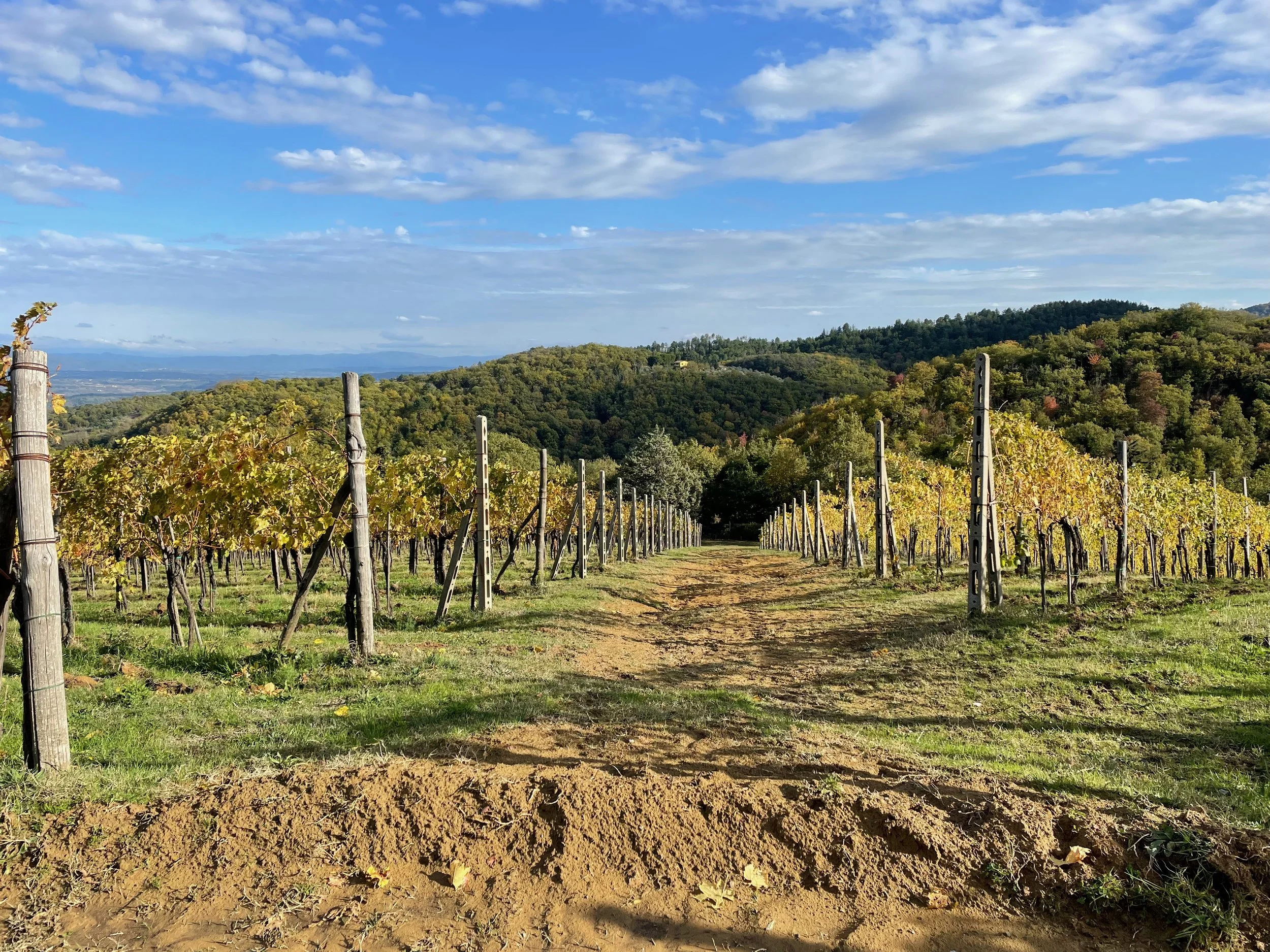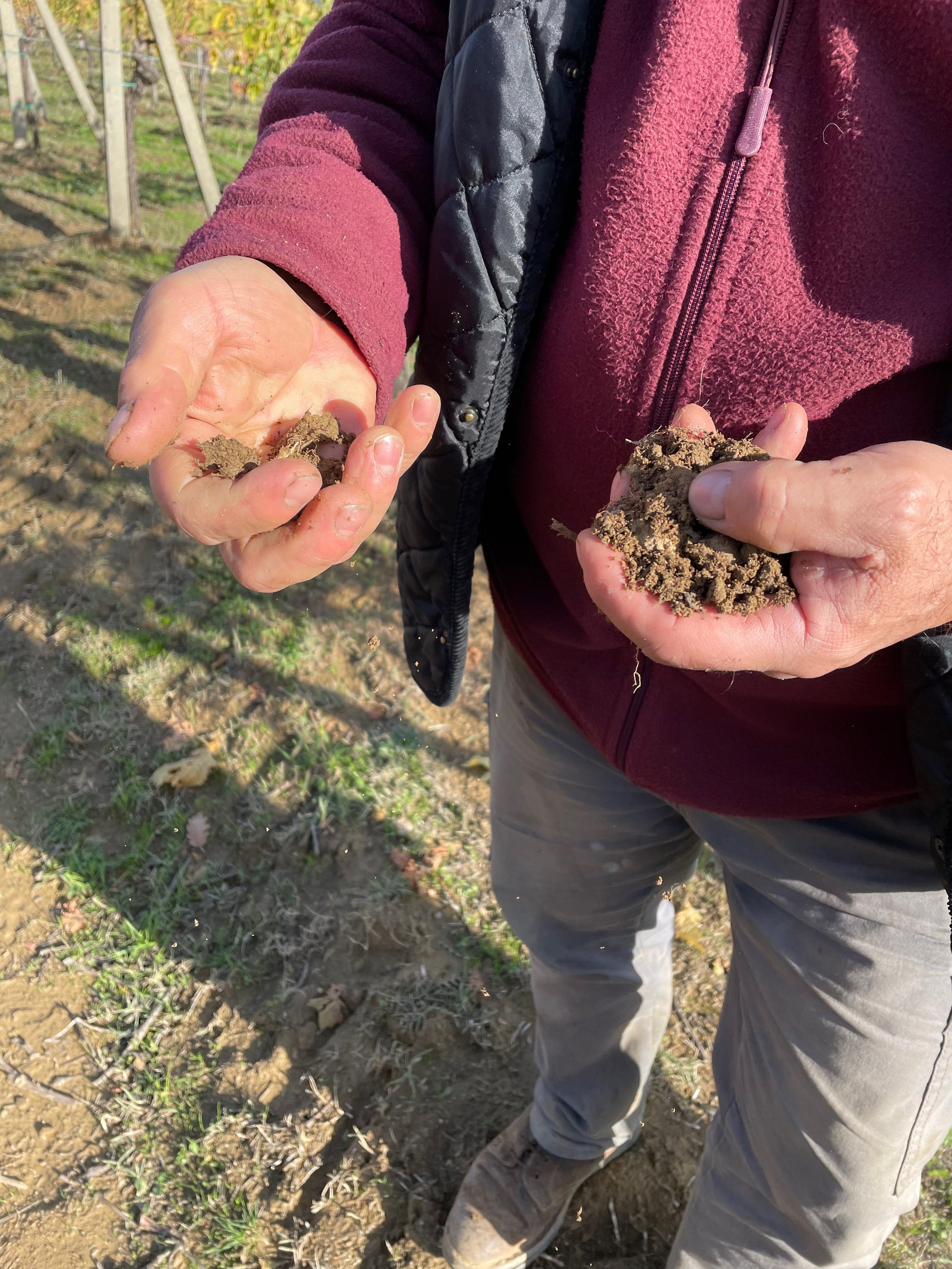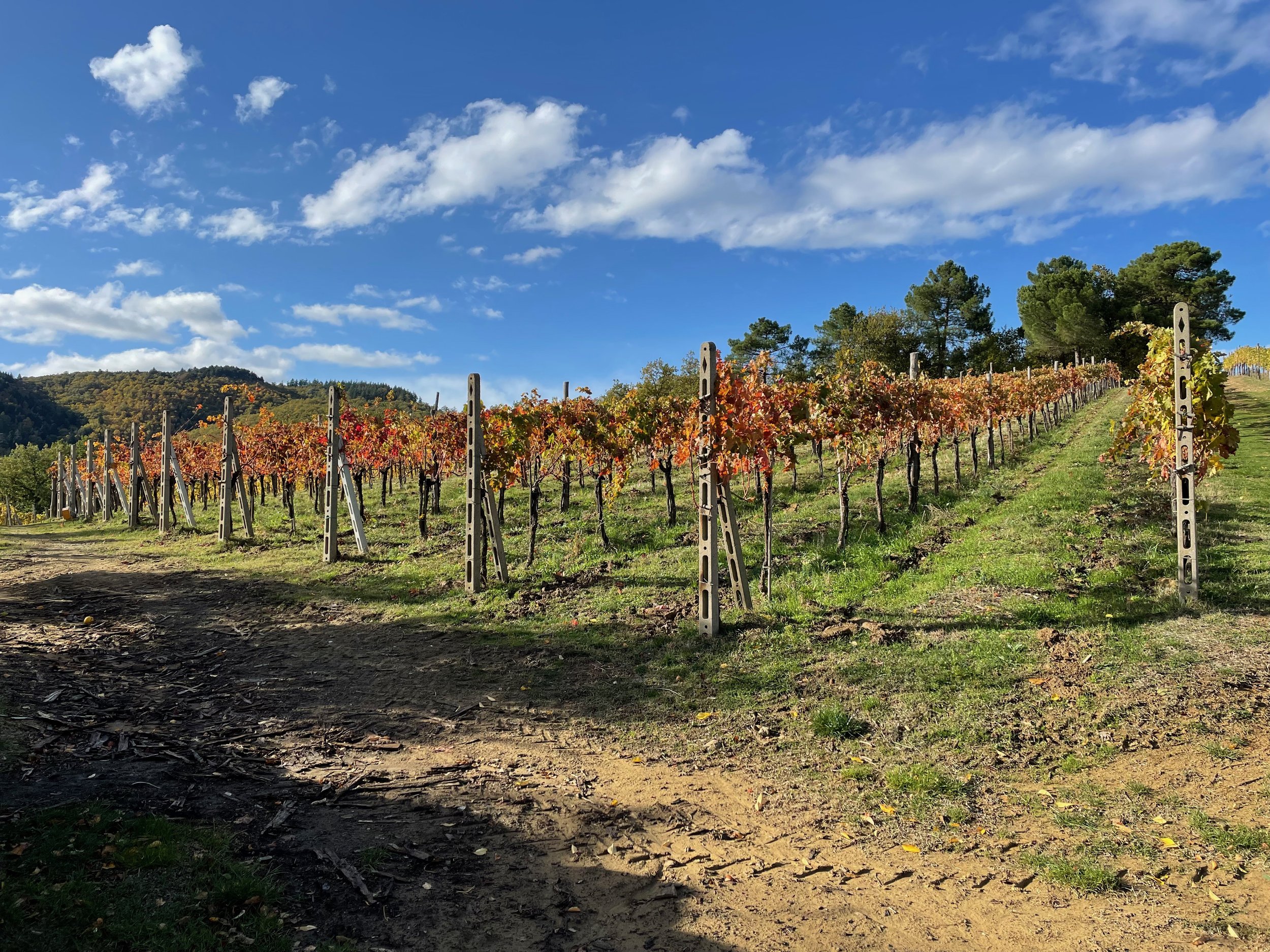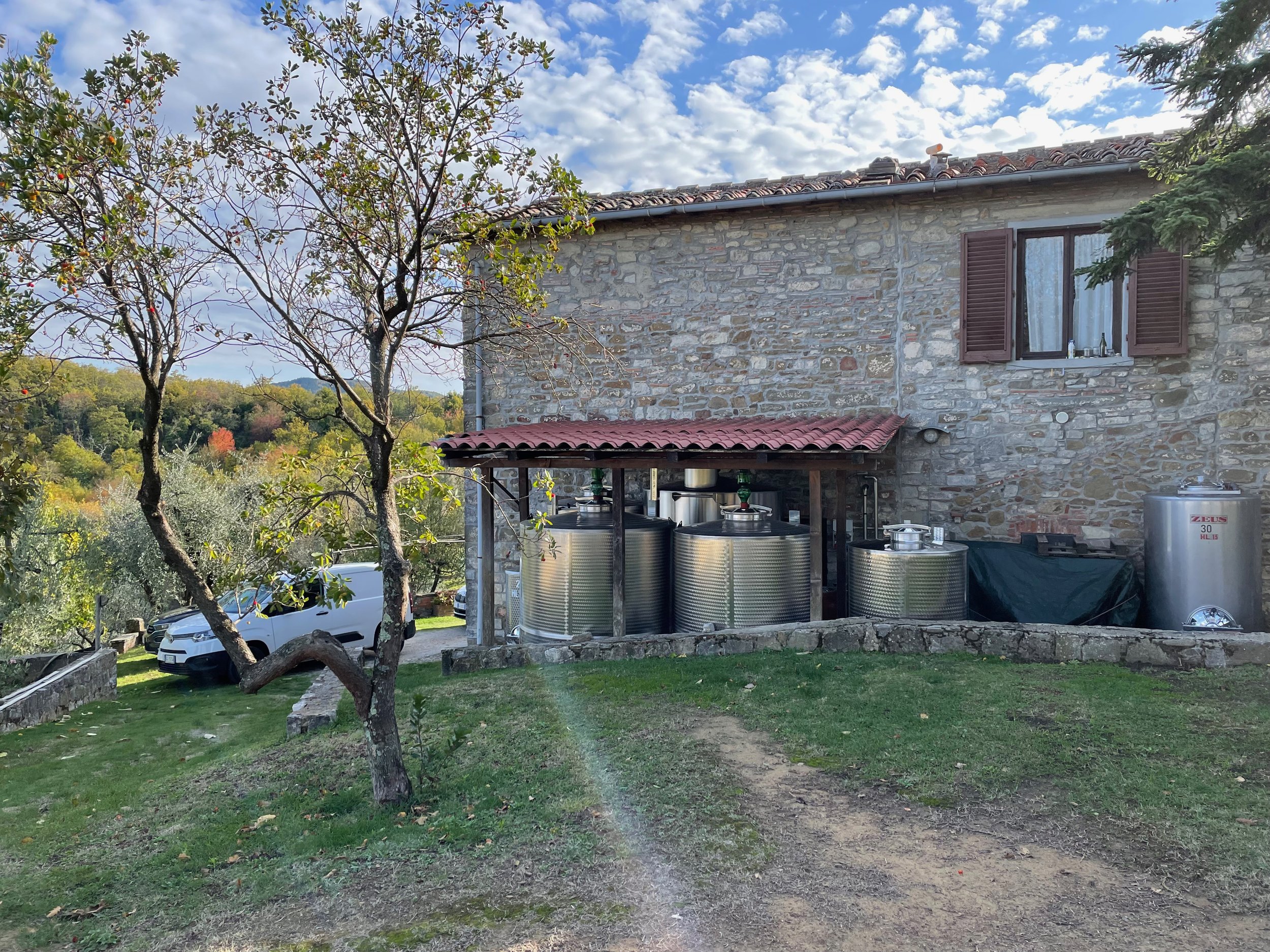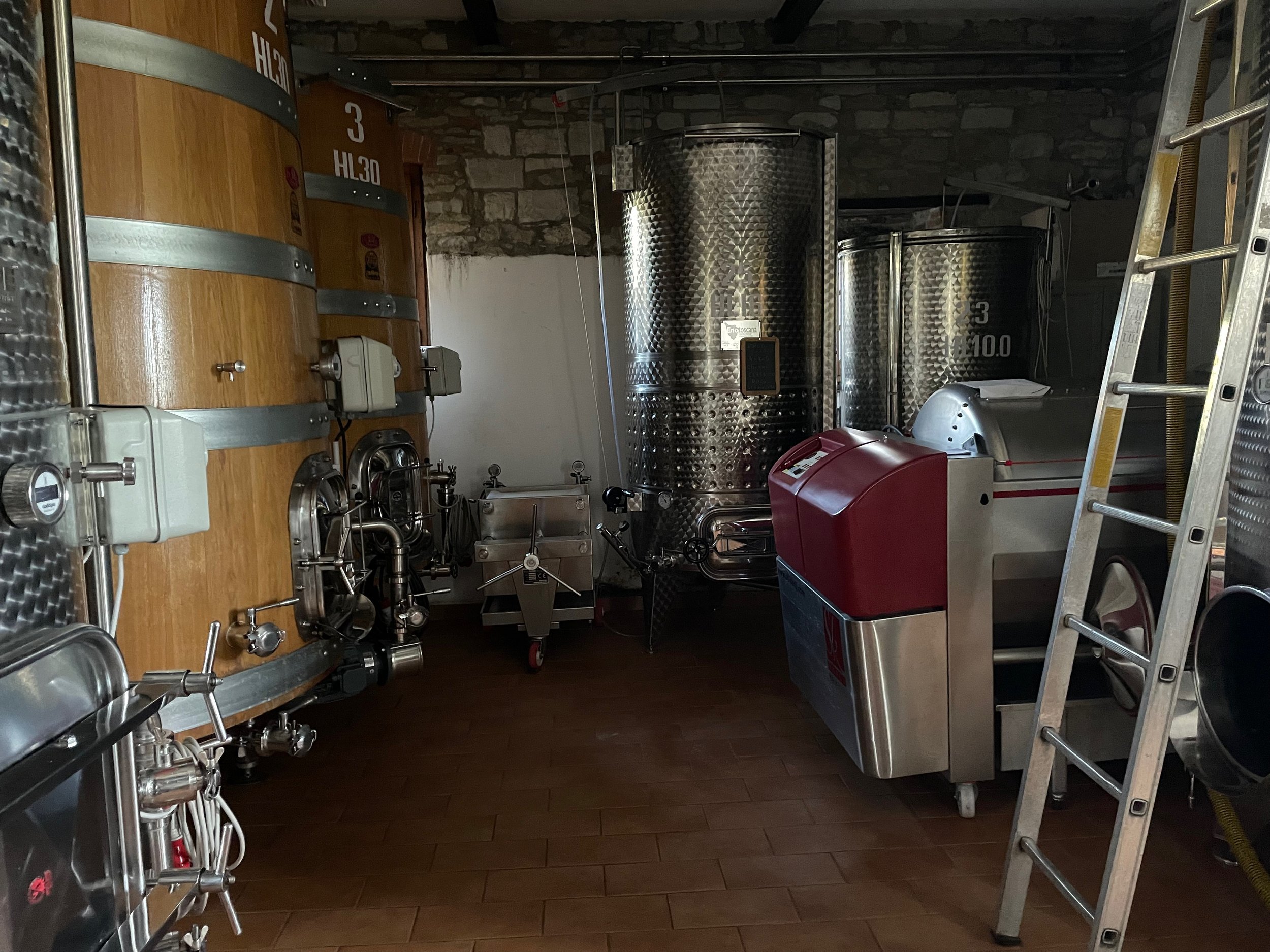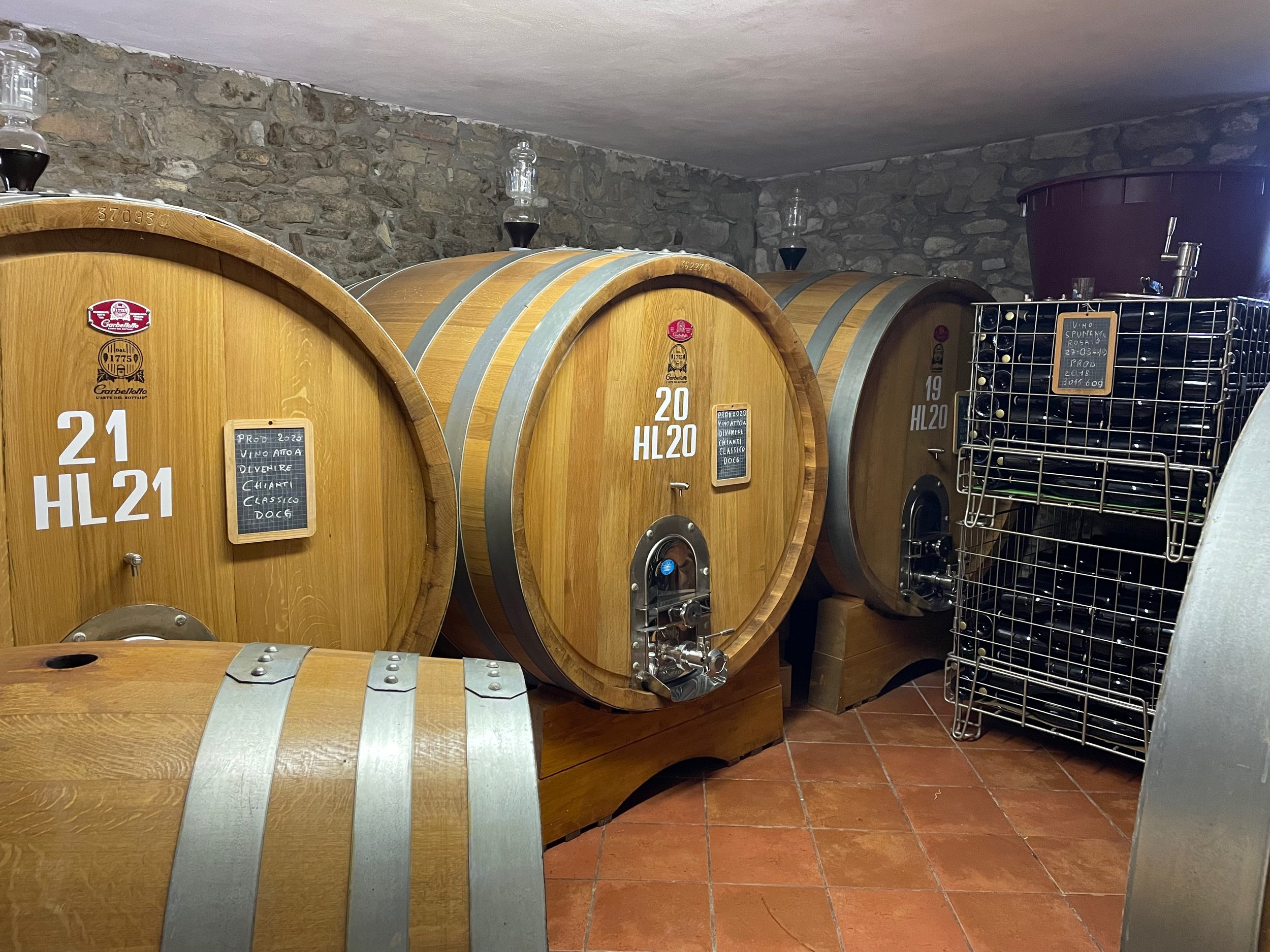Monterotondo
ABOUT MONTEROTONDO:
Monterotondo is a hill high on the southeast corner of the Chianti Classico appellation, in the commune of Gaiole. The estate named after this hill makes extraordinary wine, mostly from Sangiovese. Using an unusual technique of very long macerations with the skins creates wines that are deep, concentrated, and exciting.
Monterotondo is based on an old farmhouse that was first built in 1056. Saverio Basagni and his wife Fabiana took over the Monterotondo estate in 1994; it had been a sort of family hobby for his father and grandfather. They replanted the vineyards, and then switched to organic production in 2003. The vineyards are all planted with indigenous varieties, predominantly Sangiovese, which is the backbone of any Chianti, with small amounts of Malvasia Nera and Canaiolo. The vineyards are at a very high elevation, 550 meters above sea level or higher, and the soil is ‘galestro’ sandstone, one of the classic Chianti soil types.
At some point, Saverio, who graduated from enology school and has worked as an enologist for larger wineries, decided to start using very long macerations with both the Chianti Classico and the Riserva. Normal red wine macerations range from perhaps ten days to a month or even six weeks, but Monterotondo’s wines are aged on the skins using the traditional submerged cap method for many months, depending on the vintage. You would think that leaving the wines in contact with the solid parts of the grape for that long would make them bitter, but in practice, the bitter tannins combine and become round and attractive during this process. The results still show the classic cherry fruit notes of this region, but with an Assam tea note woven in; even the non-Riserva Chianti is chewy, mouth-filling, complex, and very long, and the Riserva is of course even more substantial.
_____________________________________________
the wines:
Chianti Classico ‘ Vigna Vaggiolata’
A blend of 85% Sangiovese, 10% Canaiolo, 5% Malvasia Nera*; all estate-grown fruit and fermented using indigenous yeasts only. Sangiovese is macerated for four months or longer, depending on the vintage, using the submerged cap method, the other varieties are given a more normal fermentation with a total maceration of several weeks. The combined wine is then aged in large (30 HL) barrels of neutral oak for about two years, much longer than the minimum required for Chianti Classico, and cold stabilized by leaving the barrels outdoors during the winter. About 15,000 bottles were produced.
Broad bright red color, fairly dark for Sangiovese (due to the long maceration, apparently); complex aroma and flavor of cherries, tea leaf, spices, a hint of mint. On the palate, this has the weight and beefy structure of a Riserva, very long and complex. Cries out for bistecca alla fiorentina.
*in fact there are a few Ciliegino and Colorino vines mixed in
Chianti Classico Riserva ‘Vigna Seretina’
A blend of 95% Sangiovese, 5% Malvasia Nera; all estate-grown fruit and fermented using indigenous yeasts only. Sangiovese is macerated for four months or longer, depending on the vintage, using the submerged cap method; the Malvasia Nera is given a more normal, shorter maceration of about 2 weeks total. The wine is aged in a conical tank of neutral oak for a year, then two further years in 5, 10, and 20 HL barrels of neutral oak. About 3,000 bottles were produced.
Similar in style to the Vaggiolata - fairly dark for Sangiovese, with a huge concentrated aroma and flavor of cherries, marzipan, tea, spices, forest floor, and a hint of mint, words fail me. One definition of great wine is how hard it is to define, and this outstanding Chianti Classico is very hard to put into words. This would be at home in a tasting of Brunello di Montalcino, but it’s from a high elevation in Gaiole. Striking, distinctive, intentional wine. Make a leg of lamb or bistecca alla fiorentina with white beans and have a party.
